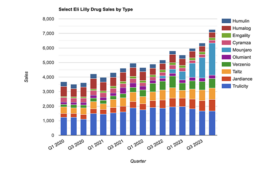|
So much money, so little time; that’s the unique challenge accompanying the Obama Administration’s unprecedented budget largesse showered on the National Institutes of Health (NIH), the US Food and Drug Administration (FDA), and other federal agencies. Officials have until the middle of April to tell the White House how they propose to responsibly spend billions of dollars in stimulus and new budget money within the next two years.
The $787 billion stimulus package, the American Recovery and Reinvestment Act of 2009 (ARRA), signed into law in February, gives NIH an extra $10.4 billion, of which $8.2 billion is earmarked for research grants and the balance for facilities construction, repair, infrastructure, and instrumentation. On top of this, lawmakers boosted NIH’s budget for the current fiscal year, which ends September 30, by more than $900 million over last year’s $29.6 billion, pushing the agency’s total Fiscal 2009 budget to more than $40 billion, a whopping 36% increase.
FDA would get $2 billion in Fiscal 2009, a 20% increase of $335 million in part to improve safety of imported and domestic food and medical products. The measure would allocate $972 million for food safety and inspection, an area requiring substantial bolstering following the recent outbreak of salmonella in domestic peanuts, and longstanding problems with imported drugs and other items from China and other countries.
At NIH, most of the extra funds are to be distributed proportionally among the agency’s centers and institutes. As a result, cancer research at the National Cancer Institute stands to gain significantly. NCI will receive about $1.26 billion of NIH’s $8.2 billion stimulus funding, plus an additional $100 million or so in the current Fiscal 2009 budget, increasing its total funding by nearly 30%. “I believe this sizable figure is a profound affirmation from President Obama and the American people of the importance of tackling the cancer burden and a sign of their confidence that we are well suited to meet that challenge,” said NCI Director John E. Niederhuber, MD.
Because most stimulus funds must be spent within two years, NIH centers and institutes will target most of the extra $8.2 billion on grant applications already in-house and as supplementals to existing awards, rather than soliciting and funding new research projects. NIH will also fund a number of “challenge grants,” each up to $500,000 annually for two years, to “jumpstart” projects that address defined health and science challenges, said Acting NIH Director Raynard Kington.
NCI will primarily fund investigator-initiated projects that have already passed peer review and “make sense” to fund for only two years, as well as new applications that have a “reasonable expectation” of making progress within two years, Niederhuber said.
|
In releasing highlights of the Fiscal 2010 budget, Obama proposed to double cancer research funding over the next several years, with $6 billion in funding set to begin with the new fiscal year October 1, 2009. “These resources will be committed strategically to have the greatest impact on developing innovative diagnostics, treatments, and cures for cancer,” the White House Office of Management and Budget said in a February 26 budget summary. A more detailed version of the budget is expected sometime this month.
Predictably, representatives of the biomedical research community were pleased with the stimulus funding, but hoped the largesse would not be short-lived. “Ultimately, it is our hope that the economic recovery package is the first step forward towards a long-term, sustainable investment in both biomedical and other scientific research,” said Richard Marchase, PhD, president of the Federation of American Societies for Experimental Biology (FASEB).
But the pharmaceutical and biotech industries were more cautious, primarily because Obama’s budget initiatives also contain several contentious provisions, which include, among others, the creation of a new regulatory framework for approval of follow-on biological drugs (so-called generic biologics); loosening of restrictions on importing prescription drugs from other countries; and funding to evaluate the relative effectiveness of health services and treatment options.
Over the past several years, lawmakers, industry, and consumer groups have not been able to agree on legislation to create a mechanism for approving biosimilar drugs. Key differences include the number of years of patent and data exclusivity granted to innovator biological drugs, and the requirements for generic companies to demonstrate interchangeability.
In calling for the measure, Obama’s Fiscal 2010 budget says the biosimilars exclusivity period should be “generally consistent with the principles in the Hatch-Waxman law,” which provides up to five years of marketing exclusivity for pioneer small-molecule drugs. Biotech and pharmaceutical companies generally support 12 to 14 years of data exclusivity, while the generics industry has been pushing for the lower number.
The budget request also includes $1.1 billion for officials at NIH and other agencies to evaluate the relative effectiveness of drugs and medical treatments. While generally supporting the concept, the pharmaceutical and biotech industries fear the effort could lead down a slippery slope, where useful treatments will be stifled over cost concerns—a first step toward government rationing.
“As the Administration begins to implement this new initiative, we expect it will be done with real transparency, openness, accountability, and public input in how research priorities are set and how studies are ultimately communicated and conducted,” said Billy Tauzin, president of the Pharmaceutical Research and Manufacturers of America (PhRMA) trade association.
In a policy statement, the Biotechnology Industry Organization (BIO) concurred, saying it was “concerned that comparative effectiveness information may be used strictly as a means to contain costs, rather than deliver health care value by improving patient health outcomes.”
About the Author
Contributing editor Ted Agres, MBA, is a veteran science writer in Washington, DC. He writes frequently about the policy, politics, and business aspects of life sciences.
This article was published in Drug Discovery & Development magazine: Vol. 12, No. 4, April, 2009, pp.6-8.
Filed Under: Drug Discovery





